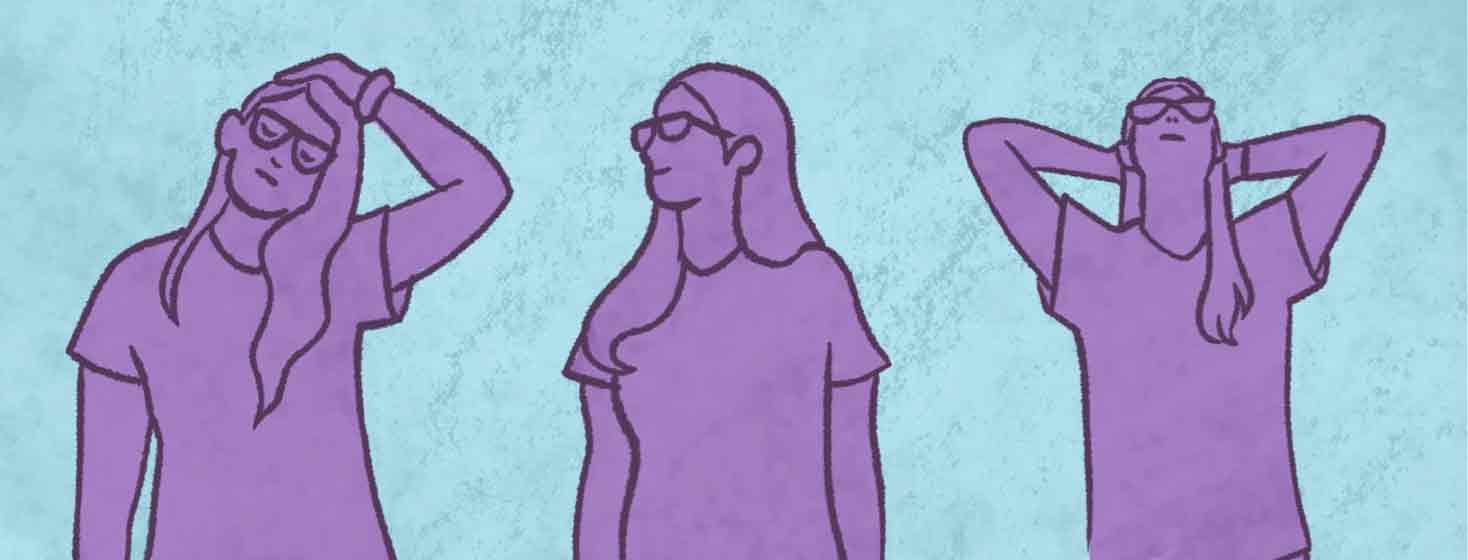Guest Post: OT's Routine for Relieving Tight Neck Muscles
Can you relate to the following sensations?
- The dull ache on the back of your neck that runs up your head.
- The tension built up in your jaw, shoulders, and neck from your posture sitting in the home office.
- The tender spots along the tops of your shoulders that never seem to go away.
If you thought “oh yes, that’s me” to any of those statements then it's time to relieve the tension in your tight muscles that might be contributing to your migraines.
Can an occupational therapist help with migraine?
As an occupational therapist, it's my job to help you do the activities that you need and want to do each day. When it comes to migraines, that might entail strategies related to pain management, work modification, posture re-education, coping or stress management, manual work to stretch or massage tight muscles to relieve tension, and so on.
Stretches & exercises to relieve muscle tightness
When you’re feeling those sensations as first described in this article, stretches and exercises done on a consistent basis will significantly help. The routine explained below will help to make substantial improvements that lead to less tightness in your muscles and, ideally, less frequent migraines that are caused by those tight muscles. This routine can be completed upwards of 2-3 times per day with no equipment and in under 10 minutes.
Warm up
First, the routine starts with active movement to warm up the muscles prior to stretching. Just like stretching a cold rubber band, our muscles do not want to stretch when cold. We can get a deeper, more effective stretch when our muscles are warmed up.
Please see the video for demonstrations on how to perform the following routine.
Warm-up
- Look side to side 10 times
- Look up and down 10 times
- 10 chin tucks
- 10 forward shoulder circles
- 10 backward shoulder circles
- 10 shoulder blade squeezes
Stretches to relieve neck tension
Second, stretches and exercises are gently performed. At this point in the routine, our muscles should be warmed up and ready to be stretched. This is where the magic happens in relieving the built-up tension that might be causing our migraines. The stretches should be performed gently, so as not to cause pain or discomfort, and should not feel forced.
Ear-to-shoulder stretch: 3 sets of 5-second holds on each side
- If you don’t feel enough stretch, gently place your hand on head to give slight pressure on your head to increase the stretch.
Chin-to-armpit stretch: 3 sets of 5-second holds on each side
- Bring ear to shoulder and then turn down towards armpit
- If you don’t feel enough stretch, gently place your hand on head to give slight pressure on your head to increase the stretch.
Wall chest stretch: 3 sets of 20-second hold on each side
- Standing parallel to the wall, bring the arm against the wall behind you with the palm flat on the wall. Use your other hand that is in front of your body to gently push away from the wall to stretch the chest muscles.
Shoulder blade squeeze with a hold: 3 sets of 10 squeezes with a 3 second hold
Isometric neck extension: 3 sets of 5 with a 3 second hold
- Bring hands behind your head. Extend your neck into your hands while simultaneously pushing gently into your head to create resistance.
Neck extension: 3 sets of 10 gentle neck extensions
Talk to your doctor
While this article is written by a licensed and registered occupational therapist, this article is for informational purposes only and is not intended to be a substitute for professional medical advice, diagnosis, or treatment. Always consult with your physician or other healthcare providers with any questions or concerns you may have regarding a medical condition.
About the author
Emily Kulesza is an occupational therapist from New Jersey and a graduate of Quinnipiac University. During her time in college, she aspired to combine her passions for occupational therapy, functional fitness, and holistic approaches to health and wellness.
Within the first year of her career as an occupational therapist, she created Growth Nutrition LLC so she can help all adults, with or without health challenges, build healthy habits and fitness into their lives so that they can achieve and maintain their goals, and finally get their health under control.
In addition to being a licensed occupational therapist, Emily is also a Certified Precision Nutrition Level 1 Coach, Crossfit Level 1 trainer, and is Graston Technique M1 trained. Her main focus with her clients is using a collaborative approach to implement incremental habits that result in long-term and sustained improvements to improve their health and quality of life.

Join the conversation